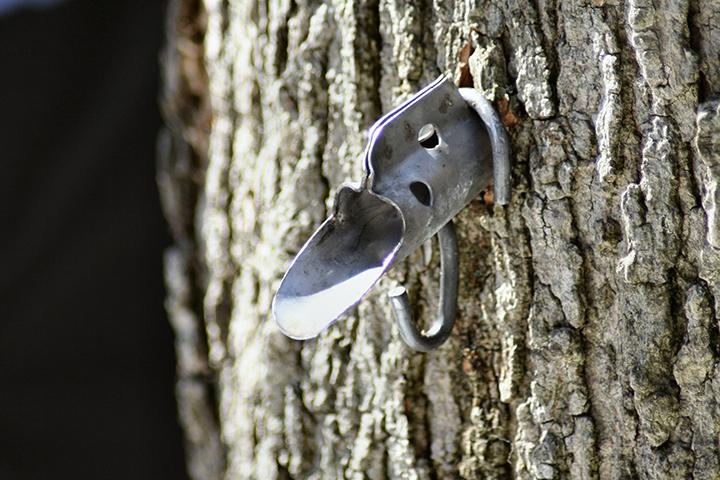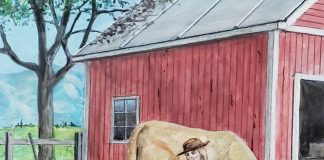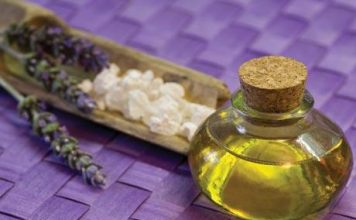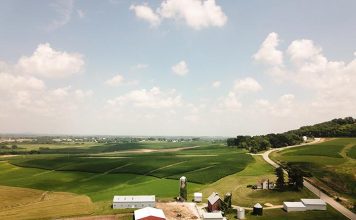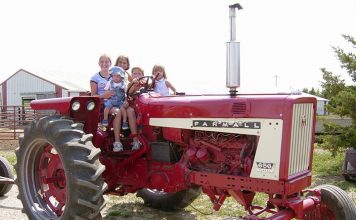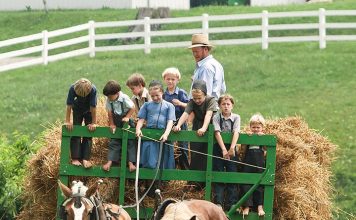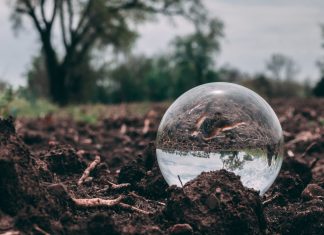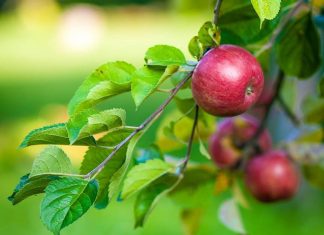| Issue #59 • September/October, 1999 |
The art of making maple syrup is generally attributed to the Native Americans. Early settlers arriving in America learned the skill from them. They then went on to improve on the Native American’s techniques by creating devices for tapping and collecting the maple tree’s sap. These same basic devices and techniques are still used in America today to produce the maple syrup that we enjoy on our pancakes and waffles.
Anyone with access to maple trees, a few tools and equipment, and some basic how-to can make this delicious syrup. If you have never tasted pure maple syrup, you are in for a wonderful experience. In addition to its use as a topping for breakfast foods, maple syrup can also be made into toppings for ice cream and pastries, treats for the kids, or, in a pinch, a source of sweetening.
Selecting a tree
You can use the sap from nearly any of the maple varieties, but the sugar maple, Acer saccharum, produces the best sap and is the one most commonly tapped. The black maple is sometimes used, as is the Norway maple. Sweet maple trees are native to primarily the northeastern part of the United States, extending north into Canada and west to Minnesota. Although you will be doing the actual tapping in late winter and early spring, summertime is the easiest time to identify the maples. If you are unsure of a variety, have an experienced person identify them for you or use a botanical manual. Mark the tree so you can identify it later when the leaves have fallen.
The tree you select for tapping should not be less than 10-inches in diameter. Smaller trees will not yield well and they may be injured. The greater the diameter of the tree and the spread of limbs, the more sap the tree will produce. A large tree can support two taps.
If you are tapping a tree that has been previously tapped, do not use the same spot. Place the new tap several inches to the side and ten inches above or below. This will permit old taps to heal.
Tools and equipment
Most of the tools you will need for tapping you probably already have. These are: drill, hammer, buckets for collecting sap, and a drill bit. The bit you use should be a little smaller than the spout you will use. Most commercial spouts require a 7/16-inch diameter hole.
Equipment for tapping can be purchased (see sources) or you can improvise your own. The first and most important thing you will need is a spout, also called a spile. You can purchase them ready-made for around two dollars each. You can also make your own from a piece of metal tubing or hollowed out wood. The spout should be 3- to 31/2-inches long.
You will also need a container to catch the sap. A coffee can and lid with a homemade metal bail or a pail works well. If you choose to use a pail, devise some sort of lid to keep debris, bugs, rain, or snow out. Sap bags and buckets designed especially for this purpose can be purchased. A sap bag is a washable, reusable plastic container designed to prevent contamination of the sap while it is being collected. They hold about two gallons of sap and are usually used with a special spout which holds them to the tree.
Tapping
Tap your maple tree in late winter or early spring. The best time is freezing nights with sunny days in the 40° to 50° F temperature range. If the temperature turns cold, the flow of sap will stop. It will resume, however, when the temperature turns warm again. You can get some sap at other times, but the spring run is the most productive and produces the best syrup. The sugar content is highest in the spring, flavor is at its peak, and the colder nights help to inhibit the growth of bacteria. Some feel there is less chance of damage to the tree when done at this time of the year.
Make your tap on the south or west side of the tree for greatest production. A later tap can be made on the north side after the sap starts running on that side. Begin by drilling a hole 11/2- to 2-inches deep at a slightly upward angle. Locate the hole approximately two to five feet above the ground for easiest access.
As soon as the hole is drilled, hammer in the spout. Use light taps to avoid splitting the bark and damaging the spout. A damaged spout or split bark will result in a leaking tap. Attach or hang your clean catch container.
During a good run, your catch container will need to be emptied as often as several times per day, depending on its size. Always empty daily however. Simply pour the container into a larger pail for storing or transporting to the site where the syrup will be made. Store the collected sap in a covered container in a cool place outside. Freezing does not harm the collected sap. If the weather turns warms you will need to process it.
Stop collecting sap when you have enough. It takes approximately 30 gallons of sap to make one gallon of syrup. This is why pure maple syrup is so expensive. You should also stop collecting if the sap stops flowing, or if the tree begins to bud. If the sap turns yellow, this is a sign the tree is getting ready to bud. To stop collecting, simply remove the spigot or spile. The hole will seal itself over in a few weeks. An application of tree wound sealer may be applied if you wish.
Making syrup
Syrup can be made inside your home, but due to the tremendous amount of moisture you will be introducing into the air and the sticky residue, it is better done outside or in a shed, outbuilding, etc. (I learned this the hard way when everything became sticky and the wallpaper fell off my kitchen walls.) Traditionally the boiling down of sap was done in a large kettle suspended from a tripod over a fire. Any source of heat will work, however, as long as it is capable of producing heat for a long time. It takes about five hours to boil down five gallons of sap into syrup.
For the boiling down you will need: a long handle stirring spoon, a candy thermometer, a means of straining the syrup after boiling, and a kettle for boiling the sap. The kettle should have a large heating surface and hold at least a gallon of sap.
Begin by straining or skimming the sap to remove any bark, bugs, etc. Fill the kettle about two-thirds full and bring to a boil. Since unprocessed sap is mostly water, it will boil at nearly the same temperature water does at your particular elevation. (You may want to check this in advance if you don’t already know.) As the water evaporates, the temperature will slowly rise. When it is six to seven degrees higher than boiling point of water, the syrup is done.
During the first half of the boiling process, the sap can be left unattended. After this point, however, the sap will need to be watched to see that it doesn’t boil over or scorch. Foam will rise to the top which will need to be skimmed off. As the sap nears completion, you may want to bring it inside and finish on your kitchen range to better control the heat and prevent scorching. If you let your syrup boil too long and become too dense, it will develop rock-like sugar crystals on the bottom of the jar during storage.
Before bottling, you will need to strain the syrup. A kitchen strainer lined with a paper coffee filter works good. This final straining will remove any remaining debris and the sand-like deposits which is found in all sap.
Preserving and storage
Canning in Mason jars is the best means of longtime syrup storage. If you do not wish to can it, or have only a small amount, it can be refrigerated.
To can maple syrup, reheat after straining to near the boiling point, then pour into hot, sterilized pint jars. Have the lids hot and sterilized also. Fill to within one-half inch of the
top and put on the lid. You can also use paraffin wax for a lid as in
jelly making.
Store in a cool place away from direct light. Use your homemade maple syrup like you would any commercially made syrup. The maple taste will be more pronounced than what you are probably accustomed to since many “maple” syrups are corn syrup with maple flavoring added.
Recipes
A tasty variation you may wish to try is:
½ c. maple syrup
1/8 c. of butter
½ c. light honey
Heat over a low flame until the butter melts. Serve warm on pancakes or waffles. This appeals especially to honey lovers.
A topping for ice cream or pastries can be made by combining equal parts of maple syrup or corn syrup in a saucepan. Heat over low flame until boiling, stirring to prevent sticking. Add walnut pieces and simmer until it is of the desired consistency. This topping can also be canned using standard methods and processing in a boiling water bath for 15 minutes.
As a treat for the kids you can make maple sugar candy. Heat the syrup until it reaches a temperature 33° F hotter than boiling water. Watch carefully to avoid scorching. Cool to 150° F, stirring until crystals form. Pour into greased molds.
Sources
Lehman’s
P.O. Box 321
Kidron, OH 44636
G.H. Grimm Co.
P.O. Box 130
Rutland, VT 05072


